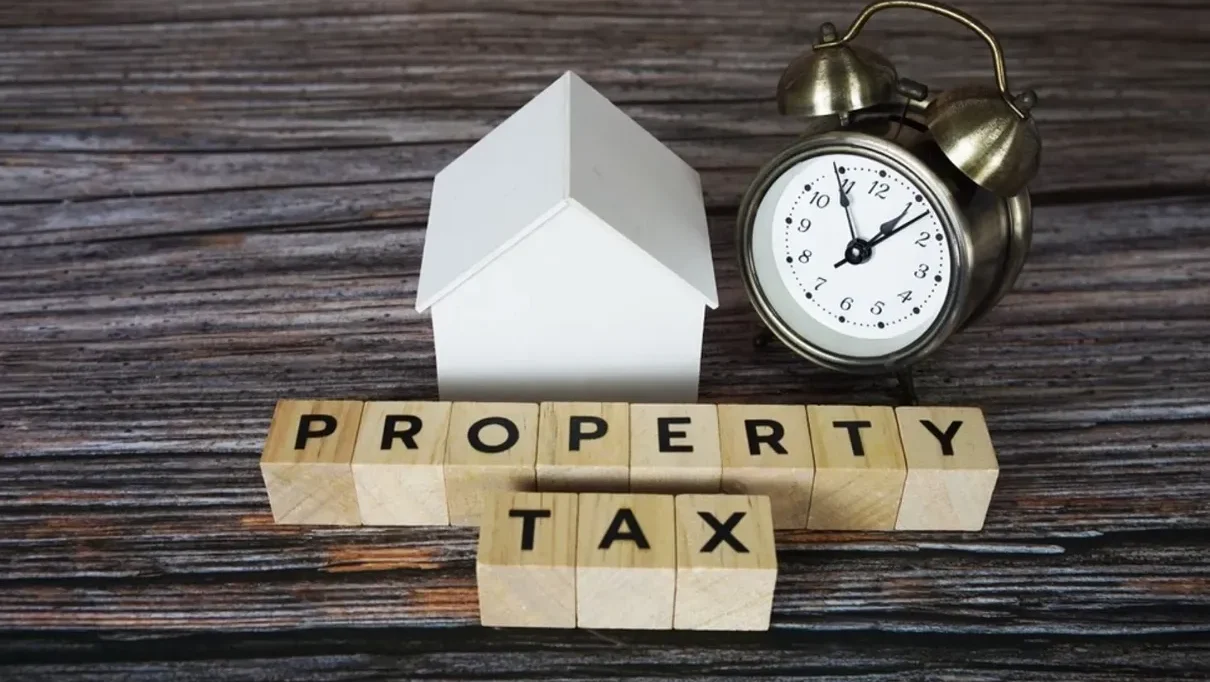
Missing the property tax protest deadline can feel like a major setback, especially if you believe your property is overvalued and you’re paying more taxes than necessary. Property tax protest deadlines, typically 30–45 days after receiving your appraisal notice or by May 15 in some states, are strict, and failing to file on time often means you can’t challenge your assessment until the next year. However, all is not lost. This comprehensive guide outlines actionable steps you can take if you missed the protest deadline, helping you reduce your tax burden now and prepare for future opportunities. Whether you’re a homeowner, business owner, or real estate investor, these strategies can empower you to address an unfair assessment and save money.
Why Missing the Deadline Matters
The property tax protest deadline is critical because it’s your window to formally challenge your property’s assessed value, which determines your tax bill. An overvaluation—due to errors like incorrect square footage, outdated market data, or unaccounted property issues—can inflate your taxes significantly. For example, if your $400,000 home is overvalued by $50,000 at a 2.5% tax rate, you’re overpaying by $1,250 annually. Missing the deadline typically locks you into that assessment for the year, but there are still ways to mitigate the impact and plan ahead. Below are the steps to take if you’ve missed the deadline, along with practical tips to maximize your options.
Step 1: Understand Why You Missed the Deadline
Before taking action, clarify why you missed the protest deadline to identify potential remedies. Common reasons include:
- Didn’t Receive the Appraisal Notice: If the appraisal district sent your notice to the wrong address or it was lost in the mail, you may have grounds to request an exception.
- Unaware of the Deadline: New homeowners or those unfamiliar with the process might not realize the deadline’s importance.
- Life Circumstances: Illness, travel, or other personal issues can cause you to miss the cutoff.
- Late Notice Delivery: In rare cases, the district may have sent the notice too close to the deadline, limiting your response time.
Action Tip: Contact your appraisal district to confirm the deadline and explain your situation. Document any issues, like an incorrect mailing address, as this could support a request for leniency.
Step 2: Check for Late Protest Options
Some appraisal districts allow late protests under specific circumstances, often referred to as “good cause” or “late-filed” protests. While not guaranteed, these options can give you a chance to challenge your assessment after the deadline. Here’s how to explore this:
- Review Local Rules: Check your appraisal district’s website or contact their office to see if they accept late protests. Some states, like Texas, allow late filings if you can prove good cause, such as not receiving the appraisal notice or facing extraordinary circumstances (e.g., hospitalization).
- File a Motion for Late Hearing: In certain jurisdictions, you can submit a written request to the Appraisal Review Board (ARB) explaining why you missed the deadline. Include evidence, such as medical records or proof of an incorrect address.
- Act Quickly: Even for late protests, there’s often a secondary deadline (e.g., 60 days after the original cutoff). Submit your request as soon as possible to avoid further delays.
Action Tip: Prepare a concise explanation of your situation and gather supporting documents (e.g., a hospital bill or returned mail). Call the appraisal district to confirm the process and required forms.
Step 3: Request a Correction for Clerical Errors
If you missed the protest deadline, you can still request a correction for certain errors in your property’s appraisal. Many states allow corrections for “clerical” or “substantial” errors without a formal protest, even after the deadline. Examples include:
- Clerical Errors: Incorrect square footage, wrong number of bedrooms, or misclassified property type (e.g., residential listed as commercial).
- Substantial Errors: Some jurisdictions allow corrections for errors that significantly inflate your value, such as a valuation based on the wrong property.
- Exemption Oversights: If an exemption (e.g., homestead or senior) was not applied, you can request it retroactively in some cases.
How to Proceed:
- Contact your appraisal district to inquire about their error correction process. They may have a specific form, like a “Motion for Correction of Appraisal Roll.”
- Provide evidence, such as property records, photos, or exemption applications, to support your claim.
- Note that corrections are typically limited to clear mistakes, not disagreements over market value.
Action Tip: Review your appraisal notice for inaccuracies and compare it to public records on your district’s website. Submit your correction request promptly, as some states have a deadline for this (e.g., within a year of the tax year).
Step 4: Apply for Exemptions to Reduce Your Taxable Value
Even if you can’t protest your assessment, applying for exemptions can lower your taxable value and reduce your tax bill. Many exemptions can be filed after the protest deadline, sometimes retroactively. Common exemptions include:
- Homestead Exemption: Reduces the taxable value of your primary residence (e.g., by $25,000–$50,000 in some states) and may cap annual value increases.
- Senior Citizen Exemption: Offers additional reductions or tax freezes for those over 65.
- Disabled Person Exemption: Provides relief for qualifying individuals, often similar to senior exemptions.
- Veteran Exemption: Partial or full exemptions for veterans, especially those with disabilities.
- Agricultural or Historical Exemptions: For properties used for farming or designated as historic.
How to Proceed:
- Check your appraisal district’s website for a list of exemptions and application forms.
- Submit applications with required documentation (e.g., proof of residency or disability).
- Ask if retroactive exemptions are allowed, as some districts apply them to prior years, potentially resulting in a refund.
Action Tip: If you haven’t claimed exemptions, apply immediately. For example, a $25,000 homestead exemption at a 2% tax rate saves $500 annually. Contact the district to confirm deadlines and retroactive options.
Step 5: Pay Your Taxes to Avoid Penalties
While exploring options, ensure you pay your property taxes by the due date (typically January 31 of the following year) to avoid penalties and interest. If you believe your assessment is unfair, you can:
- Pay Under Protest: Some states allow you to pay your taxes while noting that you’re paying “under protest,” preserving your right to seek a refund if you later win a correction or appeal.
- Request a Payment Plan: If the tax bill is a financial burden, ask your tax collector about installment plans to spread payments over time.
Action Tip: Check your tax bill for instructions on paying under protest or setting up a payment plan. Keep records of your payment to document compliance.
Step 6: Prepare for Next Year’s Protest
If you can’t challenge this year’s assessment, start preparing for next year’s protest to ensure you don’t miss the deadline again. Here’s how:
- Update Your Contact Information: Confirm that the appraisal district has your correct mailing address to receive next year’s notice on time. Update it online or by contacting the district.
- Monitor Your Assessment: Review your current appraisal notice for errors or overvaluations to anticipate issues next year. Use public records to track comparable sales in your area.
- Set a Calendar Reminder: Mark the estimated protest deadline (e.g., mid-May or 30 days after the notice) for next year to stay proactive.
- Gather Evidence Early: Start collecting data, such as recent sales of similar properties or photos of property issues, to build a strong case.
- Consider a Consultant: A property tax consultant can manage next year’s protest, ensuring timely filing and a compelling case. Many work on contingency, charging only if they save you money.
Action Tip: Create a folder (digital or physical) for property tax documents, including your notice, comps, and exemption forms, to stay organized for next year’s protest.
Step 7: Explore Other Relief Options
If none of the above options work, consider alternative ways to reduce your property tax burden or seek relief:
- Tax Deferrals: Some states allow deferrals for seniors, disabled individuals, or veterans, letting you postpone taxes until you sell the property (with interest).
- Hardship Exemptions: Certain districts offer temporary relief for financial hardship, though eligibility is strict.
- Community Resources: Local nonprofits or legal aid organizations may offer free or low-cost assistance with tax issues, especially for low-income or elderly taxpayers.
Action Tip: Contact your appraisal district or tax collector to inquire about deferrals or hardship programs. Search for local organizations that support taxpayers in your area.
When to Hire a Property Tax Consultant
If navigating late options or preparing for next year feels overwhelming, a property tax consultant can be a game-changer. They offer:
- Expertise: Knowledge of local rules, including late protest exceptions or correction processes.
- Efficiency: Handling requests, evidence gathering, and future protests to save you time.
- Maximizing Savings: Identifying exemptions or errors you might miss, often on a contingency fee basis (paid only if they reduce your taxes).
Example: A consultant might secure a retroactive homestead exemption and correct a clerical error, saving you $1,000 this year and setting you up for a successful protest next year.
Action Tip: Choose a consultant with local experience and positive reviews. Ask about their fee structure (contingency preferred) and whether they can assist with late filings or exemptions.
Real-World Example
Consider Mark, a homeowner who missed his protest deadline because he was traveling. His home is assessed at $450,000, but similar homes sold for $410,000. Here’s how he responds:
- Checks for Late Options: Mark contacts the appraisal district but learns late protests aren’t allowed without good cause.
- Requests a Correction: He finds the district listed his home as 2,500 square feet instead of 2,300, securing a $10,000 value reduction, saving $250 at a 2.5% tax rate.
- Applies for Exemptions: Mark applies for a homestead exemption ($25,000), saving an additional $625.
- Prepares for Next Year: He updates his address, collects comps, and hires a consultant to file next year’s protest.
Total savings this year: $875, with a plan to save more next year.
Common Mistakes to Avoid
- Ignoring the Issue: Failing to act can lock in an unfair assessment, costing you more over time.
- Missing Exemption Deadlines: Some exemptions have separate cutoffs, so apply promptly.
- Not Paying Taxes: Delaying payment can lead to penalties (e.g., 6–12% plus interest), even if you plan to protest next year.
- Assuming It’s Too Late: Corrections, exemptions, or late filings may still be possible, so always check with your district.
Why Acting Now Matters
Even if you missed the protest deadline, taking action now can reduce your current tax bill through corrections or exemptions and position you for a successful protest next year. Every step—whether claiming a missed exemption or preparing evidence—helps you avoid overpaying and ensures your property is taxed fairly.
Taking the First Step
If you’ve missed the property tax protest deadline, don’t despair. Start by contacting your appraisal district to explore late protest options or corrections. Apply for any unclaimed exemptions, pay your taxes to avoid penalties, and begin preparing for next year’s protest. For personalized help, consider a property tax consultant to maximize your savings and streamline the process.
For more details, visit your county appraisal district’s website or call their office for forms, deadlines, and resources. Taking these steps now can save you money and give you peace of mind.
Disclaimer: Property tax laws and procedures vary by state and county. Always verify local rules with your appraisal district or a qualified professional. This guide is for informational purposes and does not constitute legal advice.
You Might Also Like
Popular Categories
Popular News

Collin County News
McKinney Planning & Zoning Commission Recommends Expansion of Aster Park with 300 New Homes June 13, 2025
Collin County News
Celina Approves $11.87 Million Phase 1 Contract for Wilson Creek Park June 13, 2025
Flower Mound - Highland Village - Argyle
Walmart Health & Wellness Expands Access to Care Across Texas, Including North Texas Communities June 11, 2025
Collin County News
Plano’s Asphalt Overlay Projects Resume, Signaling Continued Investment in Infrastructure June 11, 2025
Collin County News
Celina Greenlights 49 New Homes at The Parks at Wilson Creek June 9, 2025
Grapevine - Colleyville - Southlake
🚌 Carroll ISD Offers Discounted 2025–26 Bus Passes Through July 14 June 9, 2025
Collin County News
McKinney Approves Zoning for 785-Acre Billingsley Development, Paving Way for Major Growth June 6, 2025
Collin County News
Celina Plans 130 New Homes as Growth Continues Across North Texas June 4, 2025










